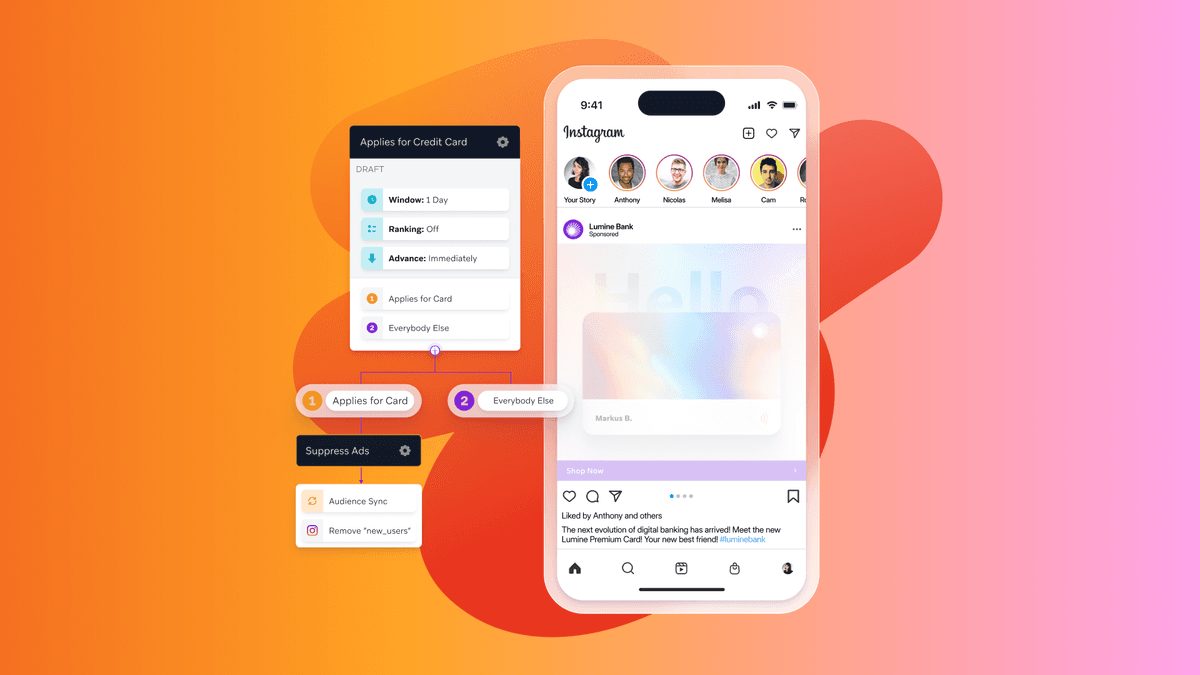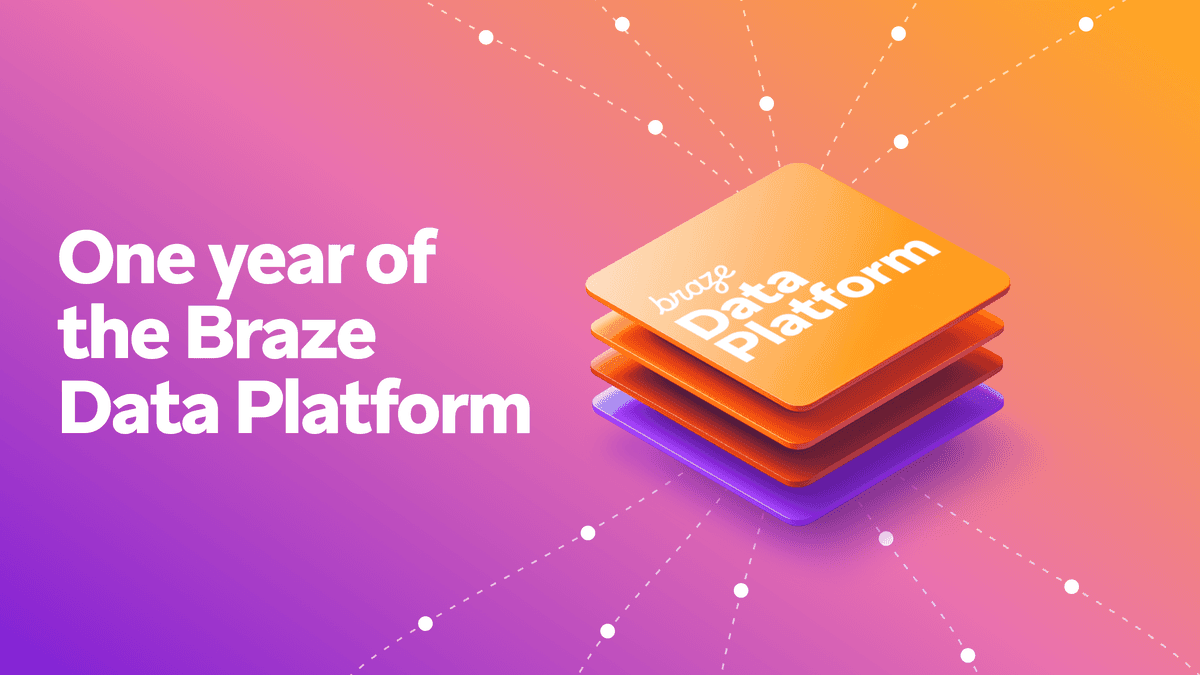What WWDC 2023 Means for Customer Engagement
Published on June 09, 2023/Last edited on June 09, 2023/8 min read


Haley Trost
Group Product Marketing Manager, BrazeHappy WWDC week! On Monday, Apple kicked off its annual Worldwide Developers Conference (WWDC), a weeklong event where the company unveils new products and announces new features across its suite of operating systems. While recent announcements from elsewhere in the tech world have leaned heavily into AI developments, Apple didn’t have much to say about new generative AI tools in its product keynote on Monday. Instead, the major announcement of the day was Vision Pro and visionOS, Apple’s new mixed reality headset and the operating system it will run on.
This year’s conference included dozens of updates, some of which may impact the way brands interact with their customers on Apple devices. Here are the updates that could impact customer engagement:
1. iOS 17 Makes (Horizontal) Moves
Coming this fall, iOS 17 will be the latest version of Apple’s iPhone operating system. Most of the iOS updates announced on Monday are aimed at enhancing users’ everyday experiences of using their iPhones, emphasizing new ways to customize experiences and streamline tasks. For example, autocorrect will become more accurate, iMessage will get a sleeker look, and Contact Posters will add a touch of personalization to phone calls.
As part of this launch, Apple is introducing StandBy, which essentially turns iPhones into smart home devices when they’re turned on their side and charging. iPhone users will be able to see important information at a glance from their favorite apps, including Live Activities in full screen. Live Activities was first introduced at last year’s WWDC as part of iOS 16, and Braze quickly began building support for this feature into the Braze Swift SDK.

Brands in the on-demand delivery, travel, and sports industries have been using Live Activities to share persistent, real-time updates with their customers right on the iPhone Lock Screen; once iOS 17 is available later this year, brands will be able to create even more immersive, full-screen experiences with Live Activities on StandBy. Teams already using Live Activities in the standard view may want to test and possibly update their presentation to account for the full screen view, but the effort should be minimal, if any.
2. iPad Lock Screens Catch Up to iPhones
Speaking of Live Activities, iPadOS 17 will bring support for Live Activities to iPads this year. iPad users will be able to track the status of sporting event scores, food delivery orders, flight progress, and other in-progress events from the iPad Lock Screen. Braze already supports Live Activities on iPhones and intends to add support for iPadOS 17 once the new version of that operating system is available, allowing brands to bring real-time customer engagement to even more devices.

With this release, iPad users will also be able to add their favorite widgets to their iPad Lock Screens to see important information at a glance. Widgets can now be interactive, so that users can take action right from the Lock Screen. Brands with existing iPhone widgets may find that they want to include them on iPads as well, in order to draw more users to their iPad apps.
3. watchOS Accelerates with New Workout APIs
For brands in the health and fitness space, new APIs for watchOS 10 will unlock enhanced customer experiences for Apple Watch users. These APIs include high-speed movement data, like acceleration and rapid changes in direction, plus the ability to import custom workouts into the Workout app.
What are the implications for customer engagement? A fitness app might start tracking Apple Watch motions in order to power notifications or in-app messages that could provide customers with more granular, customized suggestions for improving their future workouts. Apple specifically cited the benefits of these new APIs for golf and tennis—imagine a push notification on your Apple Watch telling you how to improve your next golf swing—but they’ll be useful for virtually any physical activity that requires fast or intense motion.
4. Privacy Continues to be a Priority
Privacy has been a major focus of previous WWDC announcements, and this year is no different: In fact, Apple announced roughly a dozen new privacy and security enhancements across its products and operating systems. The one that stands out from a customer engagement perspective is the new Link Tracking Protection feature in Messages, Mail, and Safari Private Browsing. Link Tracking Protection will automatically strip tracking information from URLs when users share links in the Messages and Mail apps, or when they open links in Safari Private Browsing.
Apple hasn’t yet provided many details on this feature, like whether it will be enabled for all iOS 17 users by default or whether it will impact SMS click-tracking. We plan to assess the impact of Link Tracking Protection once it’s available for us to test in a subsequent iOS 17 beta release. However, customer engagement teams should start thinking now about how they can adopt more privacy-centric attribution methods; after all, Apple has a history of introducing privacy features, like Mail Privacy Protection, that change the way marketers track campaign success.
For now, customer engagement teams should continue to double down on their first-party strategies, with an emphasis on reaching customers who have raised their hands to be communicated with on marketing channels. As an additional layer of protection against potential impacts from Link Tracking Protection, customer engagement teams may also want to explore other means of tracking sources, like using in-app or in-browser surveys to ask visitors how they arrived at that particular site.
5. Apple Enters a New Reality with Vision Pro
The flashiest announcement by far at WWDC 2023 was the unveiling of Vision Pro, Apple’s new mixed reality headset that will be available in 2024 for a cool $3,499. Vision Pro will run on a new operating system called visionOS, and it will come with a brand-new App Store featuring apps built specifically for visionOS.
Vision Pro opens up all sorts of fascinating possibilities for customer engagement, though the full impact of this technology will depend heavily on how widely it’s adopted by consumers. That said, Apple has a unique talent for turning emerging technologies into must-have products, so it makes sense for customer engagement teams to start planning now for a future where virtual, augmented, or mixed reality is a key component of customer engagement.
The first step? Figure out what a compelling, value-add mixed reality experience might look like for your customers. While this technology has many potential usages, how to leverage it to connect with customers will be more obvious for some industries than others. Media and entertainment brands, for example, can expect to find that their customers will want to watch movies and browse content on their Vision Pro headsets, but companies in other industries might find they need to put more thought into what a mixed reality customer experience should entail. For instance, how does mobile banking work in mixed reality? Maybe customer service will become a virtual conversation, or 3D graphs might help account holders better visualize their portfolios.
Once you have a picture of how those experiences could play out, the next step will be to understand the available customer engagement channels on visionOS, so that you can map out the relevant customer touch points accordingly. Apple hasn’t said much about visionOS channel support, so we don’t yet know whether familiar channels like push and in-app messages will be available on Vision Pro devices, or whether new channels designed specifically for visionOS will be released. As we learn more, we plan to share updates on the Braze blog here and add relevant feature support in the Braze platform.
Final Thoughts
Apple fans are famously an eager group of early adopters; you see it in their quick embrace of a wide range of products and services. That means that the customers who visit your app or website using Apple devices are likely to be particularly primed to try out many of these new features as soon as they're available—so the best thing you can do is be prepared. Plan to upgrade your SDKs as soon as possible and keep an eye out for more content from us on relevant updates as the release dates for iOS 17 and Vision Pro get closer.
All of the analysis and insight from Braze that is included above is based upon Apple's product announcements as of June 9, 2023 and the timing and functionality of Apple’s product releases are subject to change. We undertake no obligation to update this information after the date of this blog post.
Forward-Looking Statements This post contains “forward-looking statements” within the meaning of the “safe harbor” provisions of the Private Securities Litigation Reform Act of 1995, including but not limited to, statements regarding anticipated product support. These forward-looking statements are based on the current assumptions, expectations and beliefs of Braze, and are subject to substantial risks, uncertainties and changes in circumstances that may cause actual results, performance or achievements to be materially different from any future results, performance or achievements expressed or implied by the forward-looking statements. Further information on potential factors that could affect Braze results are included in Braze’s Annual Report on Form 10-K for the fiscal year ended January 31, 2023, filed with the U.S. Securities and Exchange Commission on March 31, 2023, and the other public filings of Braze with the U.S. Securities and Exchange Commission. The forward-looking statements included in this presentation represent the views of Braze only as of the date of this post, and Braze assumes no obligation, and does not intend to update these forward-looking statements, except as required by law.
Related Tags
Be Absolutely Engaging.™
Sign up for regular updates from Braze.
Related Content
View the Blog
What is triggered communication? How to automate smarter, timely campaigns

Team Braze

One year of the Braze Data Platform: Elevating user experiences and cross-team collaboration

Sahiz Kaur

Global and regional AI adoption: What it means for customer engagement
